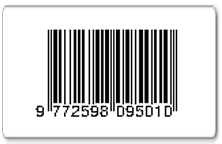Fiat Money VS Dinar-Dirham Fungsi Uang dalam Kacamata Maqashid Syariah
Abstract
[U1]Perbaiki spasi!
[U2]Ukuran Font 10, spasi 1.15. Panjang Abstrak Tidak boleh melebihi dari 150 Kata.
Keywords
Full Text:
PDFReferences
Adiwarman Azwar Karim. (2006). Ekonomi Makro Islami. Raja Grafindo, Jakarta
Ahmad. (1926). al-Misbah al-Munir fi Garib al-Syarh al-Kabir li al-Rafi’i. al- Amiriah, Cairo
Al-Jawzi, I. al-Q. (1973). I’lam al-Muwaqqi’in. Dar al-Kutub al-’ilmiah, Bairut
Al-Kramly, A. (1987). al-Nuqud al-‘Arabiyah wa al-Islamiyah wa Ilmu al-Nammiyat. al- Markaz al-Islamy Li Thiba’ah wa al-Nasyr.
AL-Maqrizi. (1985). Ighathah al-Ummah bi Kashfi al-Ghummah. Manshûrat Dar Ibn al-Walid, Damaskus
Al-Nabhani, T. al-D. (2000). Membangun Sistem Ekonomi Alternatif Perspektif Islam. Risalah Gusti, Surabaya
Al-San’aniy. (n.d.). Tafsir al-Shan’aniy (p. 93). Maktabah al-Rusyd, Riyadh
Al-Syatibi, A. I. (n.d.). Al-Muwafaqat fi Ushul Al-Syariah. Dar al-Kutub al-’ilmiah, Bairut
Al-Zamakhsyary. (1979). Asas Al-Balaghah. Dar Shadir, Bairut
AL-Zubaidy. (1965). Taj al-Arus. Muassasah Kuwait, Kuwait
Imam An-Nawawi. (Imam. (1985). Raudlah al-Thalibin wa ‘Umdah al-Muftin. Maktab al-Islami, Bairut
DR. Jaribah bin Ahmad Al-Haritsi. (2014). Fikih Ekonomi Umar bin Khattab (III). Pustaka al-Kautsar, Jakarta
Imam al-Ghazali. (1995). Ihya’ Ulumuddin. Dar al-Marifah, Bairut
Hasan, A. (2005). al-Auraq al-Naqdiyyah fi al-Iqtishad al-Islamiy (1st ed.). PT Raja Grafindo Persada, Jakarta
Hulwati. (2006). Ekonomi Islam: Teori dan Praktiknya dalam Perdagangan Obligasi Syariah di Pasar Modal Indonesia dan Malaysia (1st ed.). Ciputra Press Group, Jakarta
Muamar, A., & Alparisi, A. S. (2017). Electronic money (e-money) dalam perspektif maqashid syariah. Journal of Islamic Economics Lariba, Vol. 3 ( Nomor. 2), 75–84.
Muflih, M. (2010). Konsep Penyesuaian Harga dalam Penyelesaian Transaksi yang Mengalami Inflasi (Analisis Wacana Fiqh & Perbandingan Syariah. Desertasi UIN Jakarta.
Oni Sahroni, A. A. K. (2019). Maqashid Bisnis dan Keuangan Islam: Sintesis Fikih dan Ekonomi (4th ed.). PT Raja Grafindo Persada, Jakarta
Saidy, E. N. (2017). Uang dalam Tinjauan Ekonomi Islam. Laa Maisiyr, Vol. 6 (Nomor 2), 25–40.
Sakti, A. (2007). Analisis Teori Ekonomi Islam: Jawaban atas Kekacauan Ekonomi. Paradigma & Aqsha Publishing, Jakarta
Saud, M. A. (1980). Money, Interest and Qirad”, Studies in Islamic Economics (K. Ahmad (ed.)). The Islamic Foundation, Leicester
Siddiqi, M. N. (1982). Islamic Approach to Money, Banking and Monetary Policy” Dalam Monetary and Fiscal Economics of Islam (M. Arif (ed.)). King Abdulaziz University Press, Jeddah
Ibn Taimiyyah. (2000). al-Rad ‘Ala al-Manthiqin. Dar al-Marifah, Bairut
Wahyudin. (2009). Uang dan Fungsinya: Sebuah Telaah Historis dalam Islam. Jurnal Sosial Humaniora, Vol. 2 (Nomor1), 40–54.
DOI: http://dx.doi.org/10.35448/jiec.v4i1.8180
Refbacks
- There are currently no refbacks.

This work is licensed under a Creative Commons Attribution-ShareAlike 4.0 International License.
Copyright © Syi’ar Iqtishadi: Journal of Islamic Economics, Finance and Banking.


















